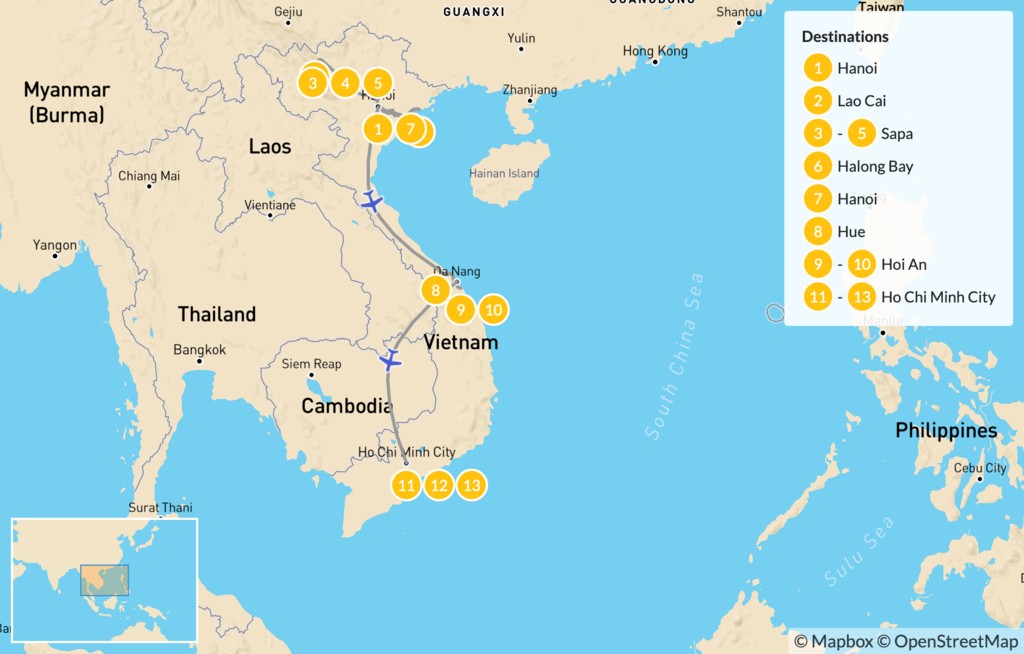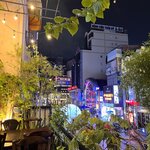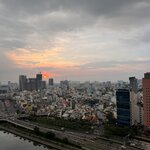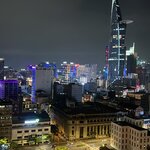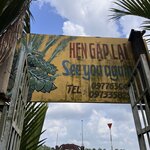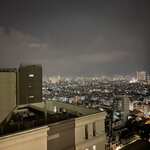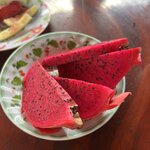Highlights
- Discover the sights, sounds, and flavors of Hanoi
- Hike around the terraced rice fields of Sapa and visit rural villages
- Visit the Gulf of Tonkin and cruise gorgeous Hạ Long Bay
- Explore the UNESCO river city of Hội An
- Tour Ho Chi Minh City and travel up the Mekong Delta
Brief Itinerary
| Day | Highlights | Overnight |
|---|---|---|
| Day 1 | Arrive in Hanoi | Hanoi |
| Day 2 | Hanoi City Tour & Train to Lao Cai | Lao Cai |
| Day 3 | Lao Cai to Sapa, Visit Silver Waterfall & Heaven Gate | Sapa |
| Day 4 | Ma Tra Hike, Visit Ta Phin Village | Sapa |
| Day 5 | Hike to Country Villages & Train to Hanoi | Sapa |
| Day 6 | Bus from Hanoi to Hạ Long Bay | Halong Bay |
| Day 7 | Bus from Hạ Long Bay to Hanoi | Hanoi |
| Day 8 | Hanoi to Huế, Sightseeing | Hue |
| Day 9 | Huế to Da Nang & Transfer to Hội An, Sightseeing | Hoi An |
| Day 10 | Bicycle Eco-Tour along the Thu Bồn River | Hoi An |
| Day 11 | Hội An to Da Nang & Fly to Ho Chi Minh City | Ho Chi Minh City |
| Day 12 | Củ Chi Tunnel, Ho Chi Minh City Tour | Ho Chi Minh City |
| Day 13 | Day Trip on the Mekong Delta | Ho Chi Minh City |
| Day 14 | Depart Ho Chi Minh City |
Detailed Itinerary
Day 1: Arrive in Hanoi

Welcome to Vietnam! Upon arrival at Hanoi's airport, you'll transfer by private vehicle to your four/five-star hotel for check-in. No doubt you'll be tired after the long journey, but after taking some time to relax and unwind you should head out and explore on foot. This modern yet traditional metropolis is well worth it.
Dating to 3,000 BCE, Hanoi is one of the most ancient capitals in the world. That said, it's a mix of the old and the new—a city defined by the contradictions of a rapidly developing yet deeply traditional society. Here glimmering office buildings sit alongside the French-colonial Old Quarter. Rarely at rest, the kinetic energy of Hanoi's motorbike-packed streets spills over into the outdoor markets, Hang Gai silk shops, curbside bún chả /bánh mì vendors, and eclectic nightlife scene.
You can start your walk on the streets of Old Town, visiting markets and street vendors, and then take in some local history and mythology with a stroll around Hoàn Kiếm Lake. At the north end of the lake is an arched red bridge leading to Jade Island and the Temple of the Jade Mountain. This temple was built in the 18th century to honor Tran Hung Dao, a military commander who famously repelled two Mongol invasions.
Nearby, in the center of the lake, is Turtle Tower, a small stone tower built to commemorate the Golden Turtle God, Kim Qui, who, according to Vietnamese myth, reclaimed a magical sword from Emperor Lê Lợi in order to return it to the Dragon King. You should know that it's legends like these around which Vietnam's rich culture is based.
After a brief walk and taking in Hanoi's famous sights, feel free to dine out in the Old Quarter. There's no shortage of incredible eateries in this neighborhood, and they run the gamut from delicious street food to fine dining to trendy fusion restaurants.
Day 2: Hanoi City Tour & Train to Lao Cai
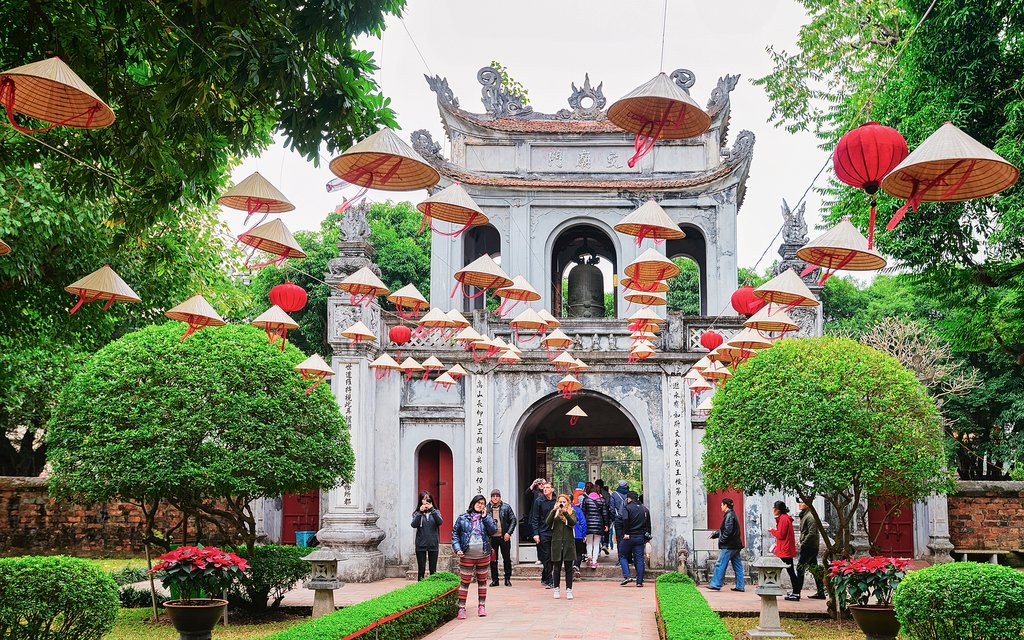
In the morning, you'll embark on a guided walking tour of Hanoi, first stopping at Hang Be Market. Nestled in the heart of the Old Quarter, this municipal market has been open for over 100 years. It offers a wide variety of items, from fresh produce, meat, and fish to dry goods, flowers, and clothing. More than a center of commerce, Hang Be is a meeting point for locals from all walks of life, and spending time here is a great way to get to know the people of the city.
Afterward, your guide will lead you north to West Lake (Hồ Tây) and the Trấn Quốc Pagoda, the oldest Buddhist temple in Hanoi. Dating to the 6th century, it was built during the reign of Emperor Lý Nam Đế during his dynasty of 544-548 ACE. This 11-story, 49-foot (15-meter) Buddhist shrine has undergone several changes and renovations over the years, but it is still home to Buddhist monks who pray every day at various shrines on the temple grounds.
After touring the pagoda, you'll veer south and visit the Temple of Literature, which was built in the 11th century and is dedicated to Confucius. This temple was the first university in Vietnam, and it's still a place where students burn incense and pray at the altars for academic success.
Next, you'll head to Ba Dinh Square and visit the outside of the Ho Chi Minh Mausoleum, the dominating structure that serves as the final resting place for the revolutionary leader. You'll cap this full-day tour with a stop at the nearby One Pillar Pagoda, one of the most iconic Buddhist temples in the city. Your tour of Hanoi ends as the sun goes down. However, your great Vietnam journey is only just beginning. After enjoying dinner on your own, you'll transfer to the Hanoi Railway Station and board an overnight train bound for the mountainous region of Lào Cai.
Day 3: Lao Cai to Sapa, Visit Silver Waterfall & Heaven Gate

Upon arrival in Lao Cai, your guide will be waiting to pick you up for the one-hour drive to the gorgeous mountain town of Sapa, known for its steep terraces of green rice paddies carved into the mountains. When you arrive you'll transfer to a local homestay for check-in and then head to a restaurant for breakfast. After eating, you'll begin a day tour around the stunning countryside.
This excursion will take you further up into the mountains around Sapa for the best views of the countryside. It won't take long, either; less than a mile outside of town you'll pass beautiful sights like rose-flower farms, chayote vines, and thick bamboo forests. As you continue uphill you'll be treated to incredible views of not only the mountain rice paddies but also Mt. Fansipan, which at 10,324 feet (3,147 meters) is Vietnam's highest peak.
The first stop will be at Thac Bac, more commonly known to foreigners as Silver Waterfall. Located about nine miles (15 km) outside of Sapa, this is not only one of the most beautiful waterfalls in the region but one of the biggest too. It plunges over 328 feet (100 m) down through a rich pine forest, and the contrasting green of the trees makes the cascading whitewater shine silver in the sunlight, hence the name.
After the falls, you'll continue by car a short way to Tram Ton Pass, which runs around the north side of Mt. Fansipan. At 6,233 feet (1,900 m) above sea level, this is the highest mountain pass in Vietnam. There's a magnificent viewing point here called Heaven Gate, where you'll stop for about 30 minutes. During this time you can snap photos and enjoy the incredible views of the surrounding Hoàng Liên Sơn mountain range, which is part of the tail end of the eastern Himalaya Mountains.
You'll then hop back in the car and drive about four miles (seven km) downhill and stop at a local farm. On a tour, you'll see the various flowers, vegetables, and even fruit trees grown in the region. Afterward, you'll transfer back to Sapa and will have the remainder of the day free.
Day 4: Ma Tra Hike, Visit Ta Phin Village

Sapa is famous for its mountainous rural landscapes and terraced rice fields. Today you'll immerse yourself in this natural beauty as you travel a couple of miles outside town to a place that seems an entire world away: Ma Tra. This traditional village is almost untouched by time, as locals still go about tending to their fields by hand the same way they've done for centuries. The area in and around Ma Tra is also a great place for a brisk hike, as it features the unspoiled highlights of the gorgeous Vietnamese countryside.
Your day begins when you meet a local guide at your hotel. The walk commences from Sapa on a trail that runs through rich green pine forests and flourishing gardens. You'll pass through smaller villages, like Ma Tra, which are almost untouched by the modern world. The hike continues through rice paddies and you'll even stop for a visit at a local school.
After lunch at a local restaurant, you'll arrive at the village of Ta Phin. Here you'll interact with members of the Black Hmong and Red Dao communities, who represent the two largest ethnic groups in the region. You'll recognize them immediately by their traditional dress, which consists of colorful turbans, blouses with floral designs, leg wraps, aprons, and scarves—mostly made from hemp cloth. All their clothing is made by hand using traditional embroidery methods.
After walking with the locals, you'll have the opportunity to visit some traditional homes plus hike around nearby caves. Afterward, you'll return to the hotel in Sapa where you'll have the evening free.
Day 5: Hike to Country Villages & Train to Hanoi
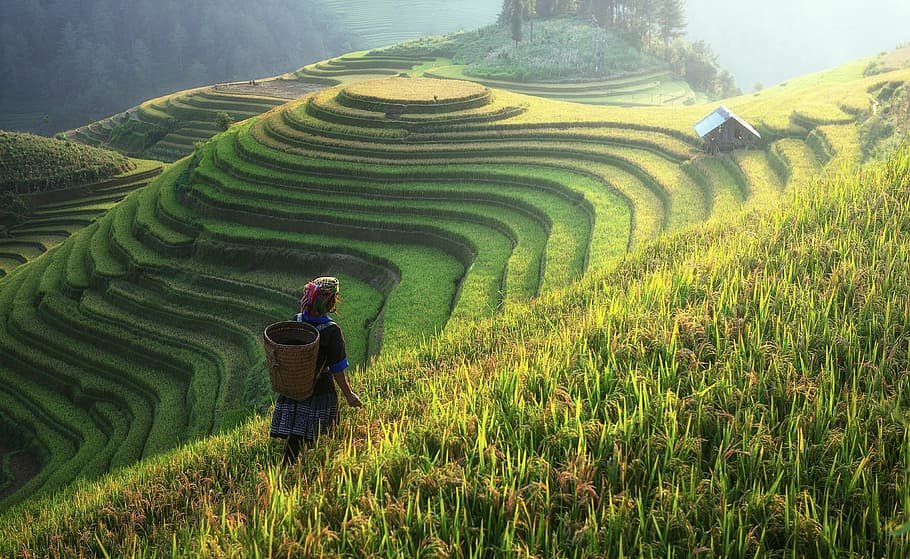
Wake up early for a half-day hike through the breathtaking Sapa Valley. From town, you'll head down the mountain about six miles (10 km) on a road passing along terraced rice paddies and green hills. The scenery will be even more stunning due to a thin layer of morning mist, which adds an ethereal quality to the Sapa countryside.
You'll hike along a narrow trail amid the terraced fields and cross the Mường Hoa River on your way to the Black Hmong village of Lao Chai. After walking along the river for a time, you'll cross a suspension bridge and arrive at another village, Tả Van Giáy. Here you'll visit a fascinating collection of ancient rock carvings depicting everything from images of man to decorative patterns.
After the rock carvings, you'll stop in at a village home for a traditional lunch. Then the hike continues through a bamboo forest to Giang Ta Chai, another small country village, this one home to the Red Dao people. The Red Dao are one of the oldest ethnic minorities in Vietnam, having arrived in the 18th century even before the Hmong people.
The day culminates with a walk to a nearby waterfall. Here you'll rest for a bit before embarking on an uphill hike to a road where a car will be waiting to transfer you back to Sapa. From there you'll transfer to the Lao Cai Railway Station to catch an overnight train to Hanoi.
Chat with a local specialist who can help organize your trip.
Day 6: Bus from Hanoi to Hạ Long Bay

You'll arrive in Hanoi early in the morning and head straight to a day-use hotel. This will give you a chance to have breakfast and refresh yourself after the overnight train ride. You'll then hop in a shuttle bus that will depart Hanoi for the coastal retreat and fishing community of Hạ Long Bay, arriving around noon.
This UNESCO World Heritage Site is one of the true natural wonders of the world. In this sweet spot where the land meets the Gulf of Tonkin, over 1,000 karst islets rise above emerald waters. Legend has it that these islands originated as precious jewels that were sprayed into the water by a great dragon who was doing battle with invaders in Hạ Long Bay centuries ago. Mythology aside, you can't deny the otherworldly beauty of the seascape here.
Upon arrival, you'll board a cruiser that will depart from the port for an unforgettable tour of the bay. Not only will you enjoy fresh seafood for lunch and dinner, but you'll overnight aboard the ship as well. This will give you an opportunity to see the sunset over the water.
Day 7: Bus from Hạ Long Bay to Hanoi

Wake up early and enjoy one of Hạ Long Bay's famously beautiful sunrises. After breakfast, the boat will cruise amid the emerald islets on its way back to the harbor. From here you'll hop on a shuttle bus for the 2-3-hour trip back to Hanoi.
Upon arrival, you'll check into your hotel and will have the remainder of the day free. Perhaps enjoy dinner out in the Old Quarter followed by indulging in a bit of Hanoi's convivial bar scene.
Day 8: Hanoi to Huế, Sightseeing

After breakfast, you'll transfer to the airport for a quick domestic flight to Huế. Upon arrival, you'll take a private car to your hotel to unpack and unwind. Then you can head out and explore what is one of the country's lesser-visited gems.
This off-the-beaten-path city in central Vietnam abounds with rich culture and deep history exemplified in the well-preserved landmarks spanning different eras. It was actually during the Nguyễn Dynasty, beginning in 1802, that Huế was the capital of the nation. This lasted until the creation of the Democratic Republic of Vietnam in 1945 when the country declared independence from French Indochina and the capital was moved to Hanoi.
First, you can pay a visit to the Imperial Citadel. One of Vietnam’s seven UNESCO World Heritage Sites, this vast, walled citadel was constructed in 1804 and is surrounded by a moat. You'll enjoy a fascinating tour of this well-preserved historic landmark that was once the center of government during the Nguyễn Dynasty.
Then, enjoy a boat trip to Thien Mu Pagoda, also known as the Pagoda of the Celestial Lady. This seven-story octagonal tower is the unofficial symbol of Huế, and it's steeped in mythology. Your guide will recount the story of the first Nguyễn lords, who upon hearing of prophecy by a "celestial lady," ordered the construction of the citadel in 1601. Around the pagoda are peaceful gardens and great views overlooking the Perfume River.
Continue to the Tomb of Tự Đức, one of the most beautiful mausoleums of Huế. It was built between 1864 and 1867 for the Nguyễn Emperor Tự Đứcs according to the specifications of the emperor himself. Abounding with Vietnamese traditional art it's divided into a temple area and a walking area, which make it the perfect locale for a walking tour. Afterward, you'll return to the hotel and have the remainder of the day free.
Day 9: Huế to Da Nang & Transfer to Hội An, Sightseeing

In the morning you'll depart by car on a two-hour drive to Da Nang. This route mostly follows the coast but also passes along the scenic Hai Van Pass, a mountain pass that affords spectacular panoramas of the limestone Marble Mountains and Da Nang Bay, where the ocean meets central Vietnam. There will be ample opportunity to take photos, plus later you'll stop at the white-sand beaches of Lang Co Bay, located just outside Da Nang.
Afterward, you'll transfer to adjacent Hội An. This small city of just over 100,000 people sits on the banks of the Thu Bồn River and is a real treasure of Vietnam. Its Ancient Town is a UNESCO World Heritage Site and one of the most impressive and historic city centers in the country. For this reason, you'll definitely want to head out and explore after checking in to your hotel.
Walking Hội An's ancient streets you'll see why it's so celebrated. This port city boasts over 2,000 years of history, with its heyday occurring from the 7th-10th centuries when it was a major player in the spice trade with Indonesia. By the 1600s, Hội An was a thriving international port, and you can see remnants of this in its Chinese temples, Japanese merchant homes, and covered bridges.
The most famous bridge is also of Japanese origin and was built back in 1719. Other city landmarks you'll want to visit include the Chinese Phuc Kien Assembly Hall and the local fish market. In the morning, when the fishing boats arrive, this riverfront marketplace comes alive with hundreds of locals haggling and jockeying for positions to get the freshest catch. After browsing the market, perhaps head to a local tailor shop to purchase some traditional clothing to take back home.
Once you've walked around the city for a while, you'll return to the hotel and will have the remainder of the day free.
Day 10: Bicycle Eco-Tour along the Thu Bồn River

After breakfast, you'll meet a local guide at your hotel and hop on a bicycle for a 15-minute ride along the banks of the Thu Bồn River. Your first stop is the Kim Bong carpentry village. This small town quietly tucked away from the hustle and bustle of Hội An is exactly that: a community of artisans who spend their days toiling in their workshops. You'll visit the shops of various artisans, including woodcarvers, mosaic designers, and even shipbuilders. Throughout the experience, your guide will handle translating duties.
After Kim Bong, you'll continue downriver to the ecological village of Tra Nhieu, a 148-acre community situated in the Duy Xuyen District of Quang Nam Province. The locals here earn their living in a number of ways, including fishing, mat-weaving, palm-leaf braiding, and making handicrafts. After a brief presentation on the history of the village, you'll take a tour, strolling amid coconut palms and over bamboo bridges to little river islands as the calls of exotic birds carry in the wind.
Your next stop on the bicycle tour is nearby Tra Que. This small village, home to just a few hundred residents, is famous for its organic vegetables. The farmers here grow 20 types of herbs and vegetables, all without the use of pesticides or chemicals. To fertilize the crops they actually use a type of river seaweed which they harvest by boat every day. During your visit, local farmers will teach you about these cultivation methods and you'll even join in the watering, transplanting, and tending of the greens.
After the gardening, you can relax and soak your feet in a solution of water infused with local herbal remedies and traditional medicine that's guaranteed to soothe. Then, you'll sit down to lunch with a local family and try that delicious, all-natural produce firsthand. Just like in the garden, you'll take a hands-on approach to the meal by learning to prepare some traditional dishes like tam hữu (herb-wrapped spring rolls) and bánh xèo (crispy Vietnamese pancakes).
After lunch, you'll enjoy a bit of rest in the village before transferring back to Hội An and your hotel. You'll then have the remainder of the day free and can enjoy dinner in town.
Day 11: Hội An to Da Nang & Fly to Ho Chi Minh City

Take the morning to relax and then, at the appropriate time, you'll transfer to the airport in Da Nang for a 1.5-hour flight to Ho Chi Minh City. Once upon a time, this metropolis in southern Vietnam was known as Saigon. Despite a communist revolution and devastating war, the city has retained much of its unique cultural mix of Asian and western traditions. In fact, many of its French Colonial landmarks still stand today.
The biggest change to Ho Chi Minh City is that it's only gotten bigger, busier, and more energetic. The streets swell with mopeds whizzing past markets and modern shopping districts as the sidewalks overflow with vendors selling everything from delicious street food to golden lucky cats. This city has it all: French-era Art Deco buildings, ancient Buddhist temples, hidden alleyway eateries, outdoor night markets, Chinese pagodas, 21st-century skyscrapers, and hotels and restaurants for every budget.
You'll see and feel Ho Chi Minh's surging energy firsthand during the private transfer from the airport to your hotel. After check-in, you'll have the remainder of the day free to spend as you see fit. You can relax in your hotel room and have dinner, or head out and get carried away in the energy of the city.
Day 12: Củ Chi Tunnel, Ho Chi Minh City Tour

After breakfast, you'll leave Ho Chi Minh in a private car for the short drive north to Củ Chi. This area is home to a massive tunnel network made famous during the Vietnam War as the Viet Cong's base of operations, particularly during the Tết Offensive of 1968.
This 155-mile (250-km) tunnel network once sheltered over 16,000 Vietcong guerrillas. First constructed in 1948 to guard against French air and ground sweeps, the tunnels then served as supply routes, storage facilities, hospitals, and living quarters for Vietnamese fighters throughout the American war. Here you'll have the option to go into the tunnels and get a glimpse of the harsh conditions faced by Vietcong guerrillas who lived here, plus see the innovative booby traps they left for unlucky enemy soldiers.
Later in the afternoon, you'll discover the highlights of this former capital of French Indochina on a tour. Historic sights include the 19th-century Gothic/Renaissance Post Office, Notre Dame Cathedral (built in the late 19th century with materials imported from France), and the Opera House, which was built in 1897.
You'll also visit the Reunification Palace, also known as Independence Palace. This is the former home of the president of South Vietnam, which was taken over when Saigon fell in 1975. You'll end the tour with a visit to the Buddhist Thien Hau Temple and the Ben Thanh Market for some souvenir shopping.
After the tour, you'll return to your hotel.
Day 13: Day Trip on the Mekong Delta

Today you'll experience firsthand the lifestyle lived by those on the Mekong Delta. In the morning you'll leave from your hotel to the waterfront province of Ben Tre. Upon arrival at the Hung Vuong Pier in Ben Tre City, you'll hop in a boat for a ride down a tributary of the Mekong River.
As you travel amid the mangrove forests of this waterway, you'll see the morning hustle of fishing boats and coconut cargo ships passing back and forth. A stop at traditional brickworks reveals how workers still make bricks the old-fashioned way: by hand. After that, it's a visit to My Long, a village famous for the tasty rice cakes made by its residents. While the recipe is secret, you'll get to see the process as the villagers make the cakes from rice paper, followed by a sampling of these treats.
Back on the water, you'll travel down canals lined with coconut palms. Here you'll visit a coconut workshop to have a look at the stages of coconut processing, from removing the husk to the peeling, which is all done by hand. After a short trip down a smaller canal, you'll stop at a honey-bee garden for a snack and honey tea accompanied by local music. Then it's a visit to a candy mill to enjoy some sweets followed by a visit to the country home of an artisan who makes traditional sleeping mats.
You'll then get to experience some of the stunning countryside when you embark on a bicycle ride (or motorized scooter trip) through the coconut groves and vegetable gardens around the river. Then take a sampan rowboat along a tranquil canal shaded by palm fronds to a riverside restaurant where you'll stop for lunch. Afterward, you'll return to Hung Vuong pier by motorboat and transfer back to Ho Chi Minh City by car. You'll then have the remainder of the day free.
Day 14: Depart Ho Chi Minh City

Take the morning to enjoy one last stroll around Ho Chi Minh City. At the appropriate time, you'll transfer to the airport to catch your flight home. This concludes your grand Vietnam adventure. Until next time!
More Great 14-Day Vietnam Itineraries
Looking for more inspiration for your trip to Vietnam? Check out these other 14-day Vietnam itineraries, with outdoor adventures, cultural trips, and best-of tours to hit the highlights.


